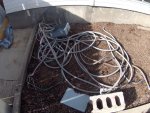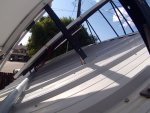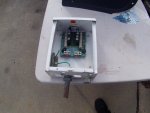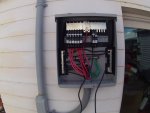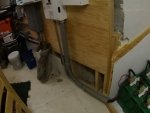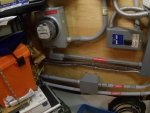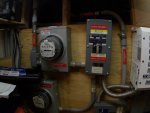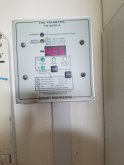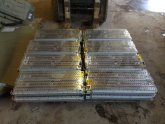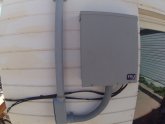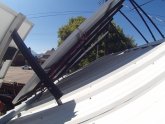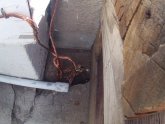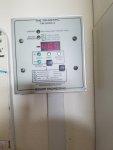dougbert
Solar Addict
2024-04-15 Version Update When I started this thread back in 2019, I did not realize it would turn into a build thread of my system. It documents What and Why I did things as well has How they were accomplished. It also shows designs that didn't work out, and also designs that did work out great. I hope it is useful for others as it has been for me - I use it as a Reference document thanks Will for the "library" for my self and the GREAT stuff others have posted Schematic: See below =========================================================================== Table of Contents - fast links Decision point to switch to Tesla Model S modules: https://diysolarforum.com/threads/s...-to-xantrex-to-xw-pro-inverters.11/post-11810 Diversion of PV power when battery is full: https://diysolarforum.com/threads/s...-to-xantrex-to-xw-pro-inverters.11/post-12683 Diversion implemented: https://diysolarforum.com/threads/s...-to-xantrex-to-xw-pro-inverters.11/post-45818 Early power wall implementation with Trace SW4024 and Lead Acid batteries: https://diysolarforum.com/threads/s...-to-xantrex-to-xw-pro-inverters.11/post-22792 New main Critical Loads panel added, along with new raceway: https://diysolarforum.com/threads/s...-to-xantrex-to-xw-pro-inverters.11/post-33082 Swapping out 20 year old panels (100w) with new ones (310w): https://diysolarforum.com/threads/s...-to-xantrex-to-xw-pro-inverters.11/post-58092 Jack-in-the-box (JITB) Tesla Battery Controller: https://diysolarforum.com/threads/s...-to-xantrex-to-xw-pro-inverters.11/post-75795 Lead Acid out - Teslas in: https://diysolarforum.com/threads/s...-to-xantrex-to-xw-pro-inverters.11/post-96045 New solar arrays: https://diysolarforum.com/threads/s...to-xantrex-to-xw-pro-inverters.11/post-112801 3rd and 4th charge controllers: https://diysolarforum.com/threads/s...to-xantrex-to-xw-pro-inverters.11/post-163811 Acquired Xantrex SW Plus 5548 inverter: https://diysolarforum.com/threads/s...to-xantrex-to-xw-pro-inverters.11/post-206500 Xantrex inverter install batteries are now 48volt based: https://diysolarforum.com/threads/s...to-xantrex-to-xw-pro-inverters.11/post-215614 Decision to go back to the Schneider XW Pro inverter: https://diysolarforum.com/threads/s...to-xantrex-to-xw-pro-inverters.11/post-598884 Conext PDP Arrives: https://diysolarforum.com/threads/s...to-xantrex-to-xw-pro-inverters.11/post-610047 Teardown of the Xantrex powerwall begun, in preparation for the new Conext XW Pro powerwall: https://diysolarforum.com/threads/s...to-xantrex-to-xw-pro-inverters.11/post-637210 XW Pro arrives and its installation https://diysolarforum.com/threads/s...to-xantrex-to-xw-pro-inverters.11/post-647602 In depth of the array contactors controlled yby the JITB https://diysolarforum.com/threads/s...to-xantrex-to-xw-pro-inverters.11/post-681547 Adding 5 more AC breakers to the PDP for future 2nd inverter https://diysolarforum.com/threads/s...to-xantrex-to-xw-pro-inverters.11/post-745839 Upgraded AC wires from AWG 6 and 4 to AWG 2 and 1 https://diysolarforum.com/threads/s...to-xantrex-to-xw-pro-inverters.11/post-772947 Added 2 AC line monitor meters, one for L1 and one for L2 https://diysolarforum.com/threads/s...to-xantrex-to-xw-pro-inverters.11/post-774724 Use of ChargeVerter to float battery and run house loads when battery hit LOW voltage https://diysolarforum.com/threads/s...to-xantrex-to-xw-pro-inverters.11/post-957639 Putting the XW Pro's AUX port to good use: Remote Power Off switch and GRID enable of chargeverter when battery voltage is low https://diysolarforum.com/threads/s...to-xantrex-to-xw-pro-inverters.11/post-958585 ========================================================================== Features
========================================================================== High level schematics of the system - I try to keep these updated to actual implementation of the system therefore the early posts are no longer reflected in the design as I "refactored" the system over time ===========================================================================    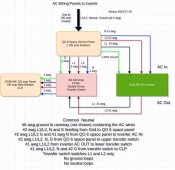 Current Pictures of the Power Plant Here is the main AC portion of power plant There are 4 L14-30R receptacles into which the Chargeverters can be manually plugged into 2 from the GRID and 2 from the generator There is a "Switched" L14-30r that controlled by XW Pro AUX Relay line - Set for LOW Battery trigger it is feed from the grid  my 2nd Chargeverter is loaned to my son until his V2 arrives when it comes back it will be positioned above the 1st one the space to the left of the XW Pro is for the future 2nd XW Pro  DC Side with DIY Tesla battery stack 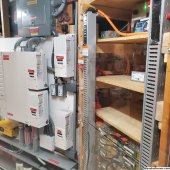  |
FUTURE PLANS
upgrade current 125 amp service to 200 amp service
1 line schematic
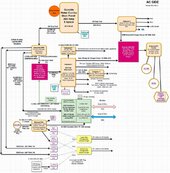
Last edited:







